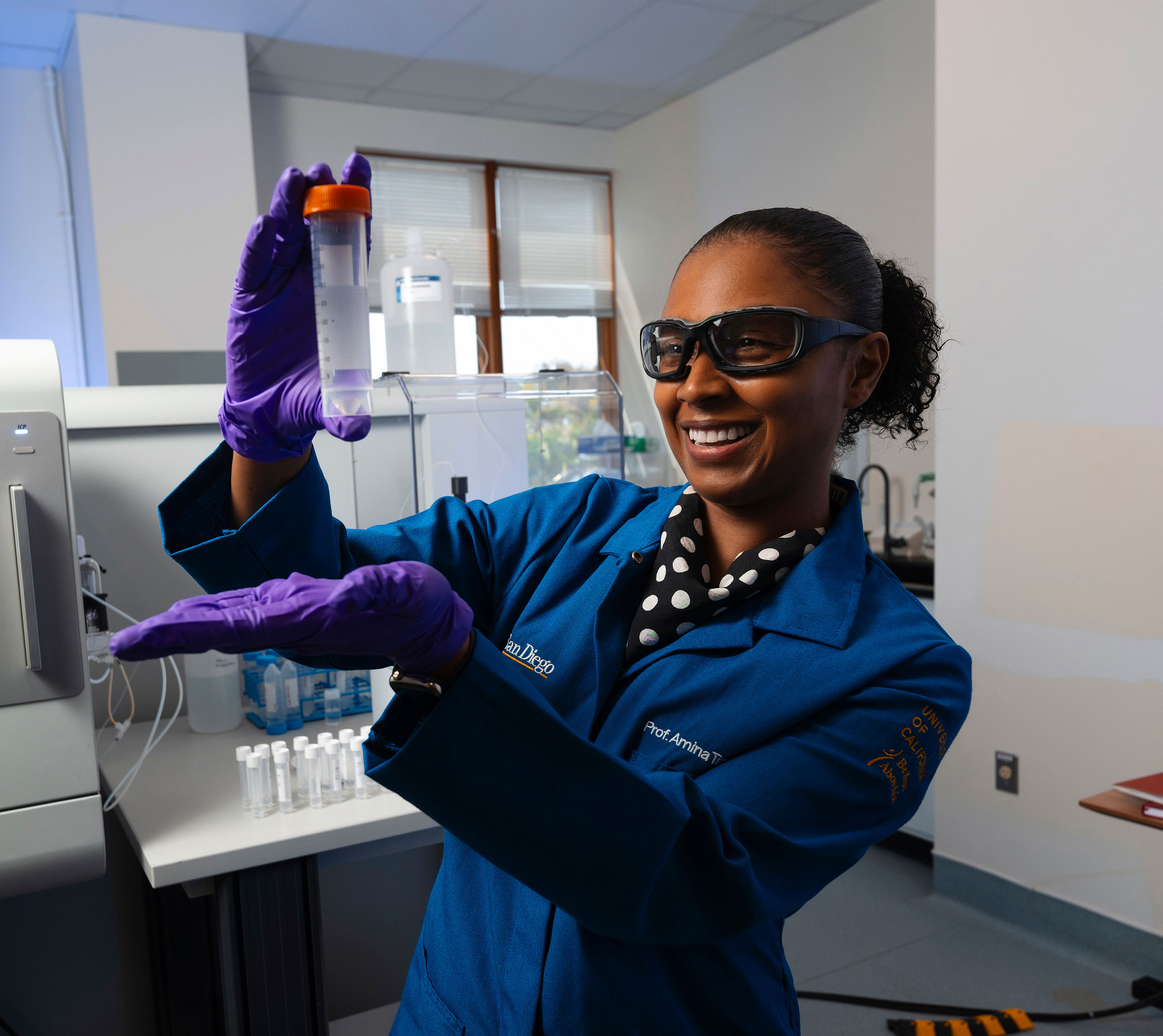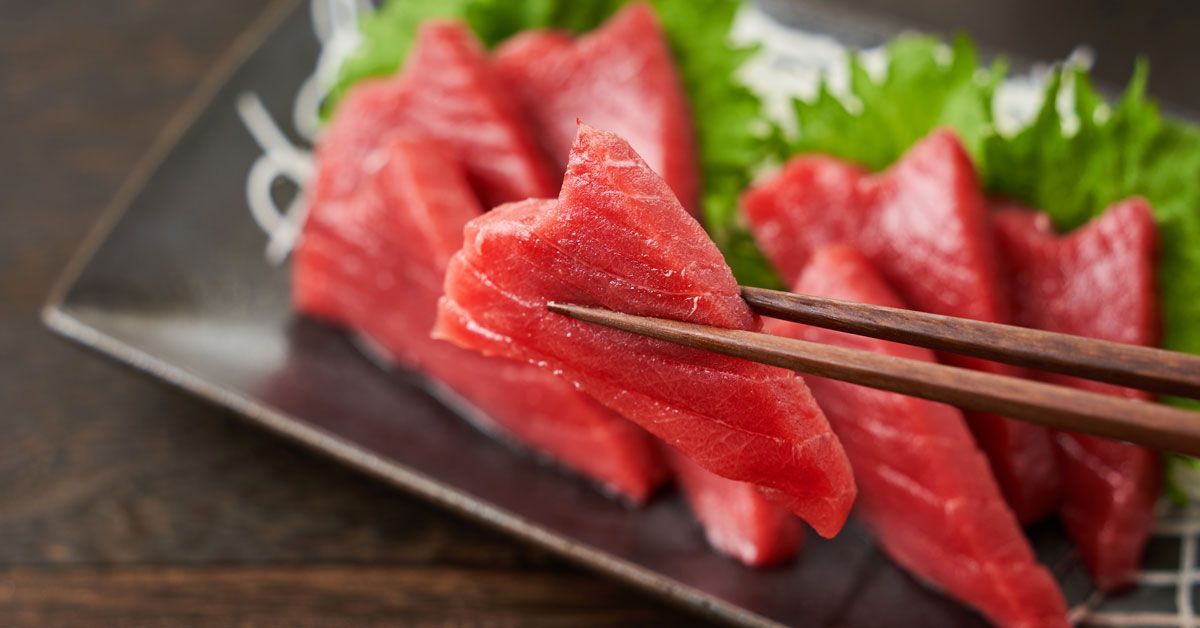Engineered Bacterium Could Shield People from Mercury Toxicity
Researchers load common probiotic species with gene sequences from mercury-resistant microbes found in mines
Published Date
Article Content
Researchers from UC San Diego’s Scripps Institution of Oceanography and UCLA announced the creation of an engineered bacterium that has the ability to convert the toxic form of mercury present in seafood — methylmercury — into less toxic forms that are more easily removed from the human body.
The team found that the engineered microbe Bacteroides thetaiotaomicron eliminated methylmercury from the digestive tract resulting in lower levels in tissue and feces of mice in as little as 12 hours. Development of the microbe as the basis of a detoxification therapy for people could reduce risks of neurological impairments among children with high prenatal exposure to dietary methylmercury.
The results appeared May 1 in the journal Cell Host and Microbe.
Mercury is a pollutant that enters water from several sources, the largest of which are human activities such as coal burning, artisanal gold mining and smelting, and wastes from consumer products. In the ocean, mercury is transformed into a toxic form called methylmercury. It also biomagnifies, meaning that methylmercury concentrations in animal tissues increase up the food chain from algae-eaters to top predators like humans. Thus, people who eat primarily food containing high mercury are at higher risk of mercury-induced toxicity.
Study co-senior author Amina Schartup, a marine biogeochemist at Scripps Oceanography, said that though health officials have issued advisories especially to pregnant women to avoid some seafood, for many women around the world, fish is their only source of protein and important micronutrients.
“Despite global efforts to reduce mercury emissions and its accumulation in fish, methylmercury levels in seafood are not expected to decline anytime soon. Fish remains a major and culturally important part of the diet for many people around the world and we hope it continues to be,” said Schartup.
“We envision the possibility that people could take a probiotic to offset the risk of consuming too much methylmercury, especially when pregnant,” said UCLA Associate Professor and Director of the UCLA Goodman-Luskin Microbiome Center Elaine Hsiao.
Schartup and colleagues from UCLA’s David Geffen School of Medicine and Department of Integrative Biology and Physiology performed the study. They came together in 2021 after Schartup joined Scialog, a program of the Research Corporation for Science Advancement (RCSA) that hosts scientists interested in an array of research topics. There, she met study co-senior author Elaine Hsiao of UCLA. Hsiao is a leader in the field of microbiome research, particularly as it pertains to maternal-fetal health. They pitched and received seed funding from RCSA to better understand the potential of microbes to combat mercury toxicity in humans.
“I spent years working on mercury pollution in the ocean and in our seafood, mostly on the ‘bad news’ side of science,” said Schartup. “Over time, I began to feel frustrated diagnosing problems without offering any solutions. I applied to join the Scialog ‘Microbiome, Neurobiology and Disease’ initiative. I was the only oceanographer in the cohort, and I received a crash course in the gut-brain axis.”
The team set out to find bacteria strains that could demethylate methylmercury. After some trial and error, UCLA PhD student Kristie Yu engineered a gut-friendly bacterium specially equipped with genetic code that let it efficiently demethylate — or remove — methylmercury in mice. Schartup optimized the analytical methodology needed to measure the bacterium’s effectiveness.
The research complements other studies that have tested bioengineering strategies to reduce the threat posed by high mercury levels in seafood. Those studies have shown that other forms of bacteria like E. coli can be effective in removing another less toxic form of mercury known as divalent mercury. Only the team’s engineered B. thetaiotaomicron, however, has demonstrated efficacy against the neurotoxic effects of methylmercury in vivo, which is the main form found in human diets.
“It took a truly multi-disciplinary team to achieve what we did here and there is nothing more exciting than seeing so many very different disciplines converge to come up with what we hope will one day become a real-world solution to a concerning public health problem,” Schartup said.
Hsiao and Schartup are working on improving the efficacy of the bacterium and moving closer to translation to humans, an endeavor for which continued federal funding is critical. With the National Institutes of Health now facing proposed budget cuts, projects like this one are at risk.
In addition to Schartup, Hsiao, and Yu, study authors include Franciscus Chandra, Elena J. Coley-O’Rourke, Anna Novoselov, Delanie Finnigan, Jorge Paramo, and Arlene Lopez-Romero of UCLA’s Department of Integrative Biology and Physiology; Erik Paulson of Scripps Oceanography; and David Zhang and Tien S. Dong of UCLA’s David Geffen School of Medicine. The researchers were supported by funds from the Eunice Kennedy Shriver National Institute of Child Health and Human Development; the National Institute of Environmental Health Sciences; the National Science Foundation; RCSA; the Simons Foundation; and the Packard Foundation.

Share This:
Stay in the Know
Keep up with all the latest from UC San Diego. Subscribe to the newsletter today.






